Best low-impact cardio options for home
Discover 5 effective low-impact cardio options for home workouts that protect your joints while boosting fitness. Transform your health journey with these sustainable exercises for
Maintaining a neutral spine position throughout your rowing stroke is essential for both performance and injury prevention. A neutral spine means keeping your back’s natural curve without excessive rounding or arching. This position distributes forces evenly across your vertebrae while allowing for efficient power transfer from your legs through your core to the handle. You maintain this position by engaging your core muscles, hinging at the hips rather than bending at the waist, and keeping your shoulders relaxed but strong. Let’s explore the key aspects of maintaining proper spine alignment during your rowing sessions.
A neutral spine position is fundamental to rowing for several critical reasons:
These elements work together as an integrated system. By maintaining proper spinal alignment throughout your rowing motion, you create a foundation for both immediate performance gains and long-term rowing sustainability. This proper positioning allows you to access your full strength potential while simultaneously protecting your body from the cumulative stress that improper technique places on your musculoskeletal system.
Establishing your neutral spine position begins with a methodical setup routine:
This systematic approach ensures you begin each rowing session with optimal spinal alignment. The foundation of neutral spine positioning isn’t just about the back—it’s about creating a coordinated relationship between your pelvis, core, and upper body. When properly established before you take your first stroke, this alignment becomes much easier to maintain throughout your entire rowing session.
Understanding these frequent technical errors can help you identify and correct problems in your own form:
These technical flaws often develop gradually and can become habitual without proper coaching or self-awareness. The cumulative effect of these errors isn’t just reduced performance—it’s the potential for chronic pain and injury. Recognizing these common mistakes allows you to consciously correct them, creating both immediate improvements in your rowing efficiency and long-term protection for your spine health.
Maintaining proper spine alignment through the rowing stroke requires attention to specific techniques at each phase:
The integration of these techniques creates a flowing, powerful stroke that protects your spine while maximizing efficiency. Proper form isn’t just about static positioning—it’s about maintaining dynamic alignment through a complex movement pattern. Regular form checks during your sessions, particularly as fatigue begins to set in, will help reinforce these proper movement patterns until they become second nature.
Developing targeted strength in your core and posterior chain improves your ability to maintain proper positioning:
These complementary exercises create a comprehensive support system for your rowing technique. By systematically strengthening the muscle groups that stabilize your spine, you build both the strength and neuromuscular control needed for consistent technique. This targeted approach addresses potential weak links in your movement chain, allowing you to maintain proper form even during challenging workouts or when fatigue begins to set in.
At RP3 Rowing, we understand how important proper technique is for both performance and longevity in rowing. Our dynamic rowing machines are designed to provide a realistic rowing experience while encouraging proper biomechanics. By maintaining a neutral spine position throughout your rowing stroke, you’ll not only protect your back but also unlock your full power potential with every pull.
If you’re interested in learning more about the benefits of rowing, reach out to our team of experts today.
Discover 5 effective low-impact cardio options for home workouts that protect your joints while boosting fitness. Transform your health journey with these sustainable exercises for
Discover 5 effective low-impact exercises that protect your back while maintaining fitness intensity. Learn proper form techniques to strengthen your spine without risking injury.
Discover 5 effective home workouts that build strength without stressing your joints. Learn fluid movement techniques for pain-free exercise that delivers results while protecting your
Discover effective low-impact fitness strategies that build strength and cardio health without damaging your joints. Learn sustainable workout techniques for long-term health and injury prevention.
Discover 5 effective full-body low-impact workouts perfect for beginners that protect your joints while building strength and fitness. Start your sustainable exercise journey today!
Discover how low-impact fitness creates sustainable health benefits without joint pain. Learn 5 full-body workouts that deliver results while preserving your body for decades of
Discover why low-impact workouts deliver powerful fitness results without joint damage. Learn 6 key benefits and find the perfect exercise for sustainable daily fitness that
Discover why low-impact training on recovery days accelerates muscle repair, prevents injuries, and boosts long-term fitness gains. Learn optimal activities and avoid common recovery mistakes.
Discover why rowing machines deliver a complete workout while protecting your joints. Engage 85% of your muscles with zero impact stress—perfect for fitness enthusiasts of
Discover effective low-impact exercises perfect for returning to fitness after breaks or injuries. Learn 5 joint-friendly workouts that rebuild strength while preventing setbacks on your
Discover 5 low-impact routines that challenge your entire body without stressing your joints. Build strength and burn calories while protecting your knees, hips, and spine.
Discover how rowing uniquely engages 85% of your muscles while enhancing flexibility in one efficient workout. Build strength and mobility simultaneously without stressing your joints.
Discover how consistent low-impact activity delivers powerful physical and mental benefits without joint stress. Build fitness, reduce stress, and improve mobility through sustainable daily movement
Discover why rowing machines offer the ultimate low-impact, full-body workout for home fitness. Get 85% muscle engagement with minimal joint stress—perfect for all ages and
Discover how low-impact exercise protects your joints while delivering powerful fitness results. Learn 5 joint-friendly workouts that maintain mobility and prevent pain as you age.
Discover how to build sustainable low-impact fitness habits that protect your joints while delivering exceptional results. Learn proven strategies for lifelong exercise consistency without pain.

We will send you a personal quote as soon as possible.
As soon as the quote is ready, you will receive a link by email to order directly.